Psst…
There is no such thing as Kitten Season!
There is no such thing as Kitten Season!
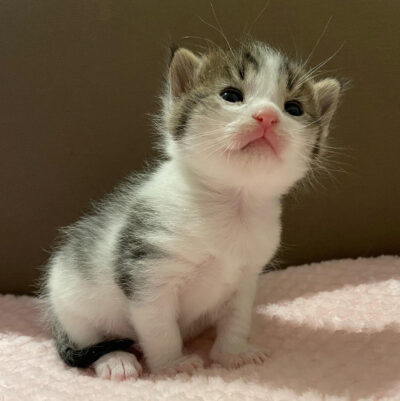 Do I have your attention? Good, because the tragedy of feline overpopulation needs everyone’s attention all the time. FYI, kitten season is usually defined as the months between April and October, when feline reproduction goes into overdrive. But the fact is, kitten season never really stops, which means that you and I can never stop doing everything we can to educate people about the absolute necessity of spay/neuter.
Do I have your attention? Good, because the tragedy of feline overpopulation needs everyone’s attention all the time. FYI, kitten season is usually defined as the months between April and October, when feline reproduction goes into overdrive. But the fact is, kitten season never really stops, which means that you and I can never stop doing everything we can to educate people about the absolute necessity of spay/neuter.
Yes, kittens are precious, irresistible little miracles.
But…there are way too many of them, meaning there can never be enough good homes for all those darlings, leaving an estimated 70 million (!!!) cats living outdoors in harsh conditions and contributing endlessly to the breeding cycle.
February is Spay/Neuter Awareness Month and World Spay Day is February 22, and if you ask me, these important reminders arrive not a moment too soon. In January, for example, there were three mother cats in my care, all just kittens themselves.
Sweet Mama Eden, only about a year old, was found with her three five-day-old baby girls in a garden outside a New York City ground-floor apartment. She was probably dumped. Three of her babies didn’t make it in the cold…it never ends.
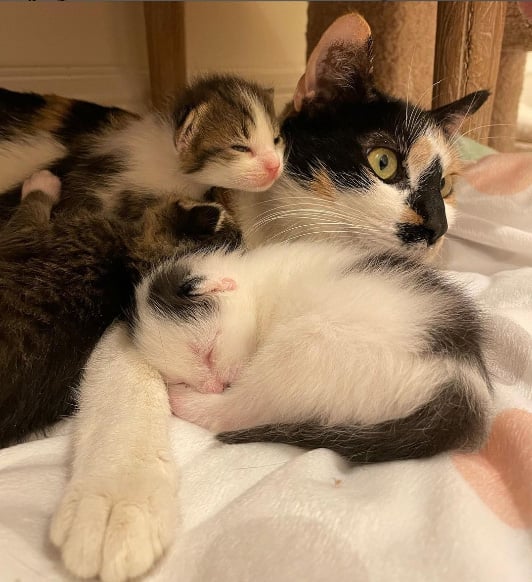
Gorgeous Mama Ginger gave birth to her four nuggets in a parking garage. A friend brought them inside where they were safe and then contacted me. A few days later, this super friendly cat and her newborns were in my program. Mama was only trying to find a warm place to deliver… breaks my heart…it never ends.
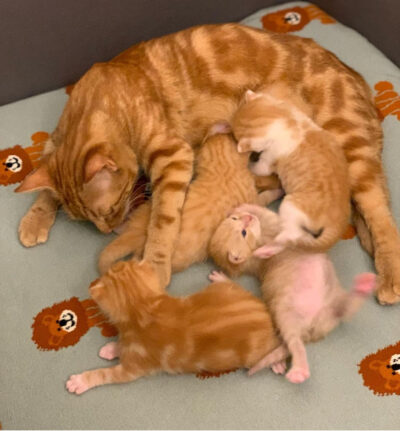
Mama Margie, under a year old, arrived with her belly full of wiggly nuggets in early January. We were all on kitten watch for the next three weeks. On January 29, four beautiful babies arrived, one cuter than the next, and I was able to show their delivery on Instagram. It’s beautiful…yes, and sad…and it never ends.
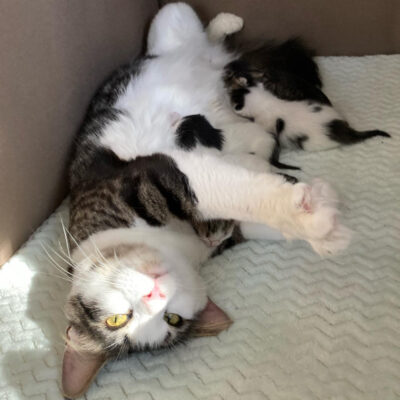
Of course, I love these kittens and their wonderful mamas, and I’ll find them loving homes. But I can’t help thinking about all the kittens being born in parking garages, dumpsters, backyards, and ditches, in barns, in the freezing cold, and in the snow. Every one of them is as precious as the 10 kittens and their mamas who are in my house right now. But even if they survive, those kittens will never know the love and safety they deserve, and the cycle of suffering will continue.
Maybe we can’t prevent all these births, but together we can do a lot to bring down the staggering numbers. I assume that if you’re reading this, you have spayed/neutered your own pets. But there’s more you can do. Let’s get started!
- Use your social media to spread the word. We’ve never had such a powerful tool at our personal disposal. Every time you post, include a spay/neuter message, and make that message positive and respectful. It can be as simple as a hashtag. #spayneuterawarenessmonth Or you could explain that spay/neuter is a safe, commonplace procedure. Say why you spayed/neutered your own pets. Let people know that spay/neuter drastically reduces pet overpopulation, saves lives, prevents suffering, helps pets live longer, healthier lives, and reduces stresses on the environment while saving taxpayer dollars.
- Support local low-cost spay/neuter programs. Almost all communities offer programs to help people afford spay/neuter. You can visit SpayUSA.org and find a network of over 1,900 affordable programs and clinics nationwide. You’re sure to find one in your area. So, do some research and find out how you can assist your local program. Many rely on volunteers to pass out flyers, visit schools, network through social media, and help coordinate appointments. And most also need donated items and monetary support.
- Support local trap/neuter/return programs. These programs help manage feral (or “community”) felines. Volunteers humanely trap these cats, who live together in what we call colonies, and bring them to a veterinary clinic where they are spayed/neutered, vaccinated for rabies, and “eartipped,” to indicate they are “fixed.” They are then returned to the colony. While caring for these cats, volunteers often discover that many “ferals” are strayed housecats who are ready for adoption. Find out how to help. Like spay/neuter programs, TNR groups need volunteers and donations.
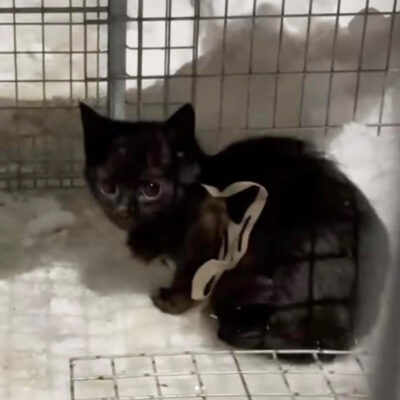 Horrible things can happen to homeless cats and kittens. A new addition to my program is a six-week-old Sodapoppy, who was found with a plastic six-pack soda ring embedded in her neck, making a deep gash that required many stitches. She’s doing well now (Thank you, Dr. Jackie!), but just imagine what would have happened had she not been found in time. She surely would have suffered and died. I despise those awful rings. They also torture and kill wildlife, especially marine animals, so please, cut them into pieces before you throw them safely into the trash. If you see uncut rings lying around, pick them up, cut them up, and dispose of them properly.
Horrible things can happen to homeless cats and kittens. A new addition to my program is a six-week-old Sodapoppy, who was found with a plastic six-pack soda ring embedded in her neck, making a deep gash that required many stitches. She’s doing well now (Thank you, Dr. Jackie!), but just imagine what would have happened had she not been found in time. She surely would have suffered and died. I despise those awful rings. They also torture and kill wildlife, especially marine animals, so please, cut them into pieces before you throw them safely into the trash. If you see uncut rings lying around, pick them up, cut them up, and dispose of them properly.
And then there’s abandonment. How this breaks my heart. Two cats in my program are classic examples of how monstrous people can be to animals they’ve lived with for years.
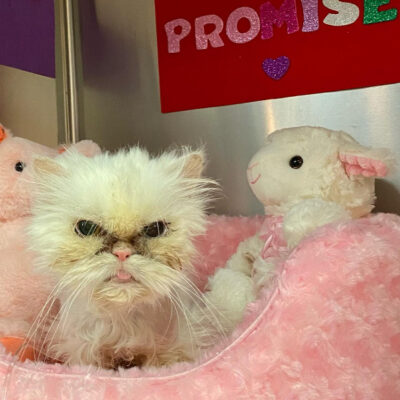 Promise: With the help of Animal League America and New York Animal Care and Control, I pulled this senior girl and welcomed her into my program. She was found abandoned in her previous family’s apartment. They apparently moved and left her behind. She needed emergency surgery for an infected uterus…never spayed and 14 years old…embedded nails needed to be removed from her paws, and she required a major shave from matted fur. She may not have many years ahead of her, but if she pulls through, I promise they’ll be filled with nothing but love and proper care. As I write this, she is with Dr. Jackie and getting a little stronger every day.
Promise: With the help of Animal League America and New York Animal Care and Control, I pulled this senior girl and welcomed her into my program. She was found abandoned in her previous family’s apartment. They apparently moved and left her behind. She needed emergency surgery for an infected uterus…never spayed and 14 years old…embedded nails needed to be removed from her paws, and she required a major shave from matted fur. She may not have many years ahead of her, but if she pulls through, I promise they’ll be filled with nothing but love and proper care. As I write this, she is with Dr. Jackie and getting a little stronger every day.
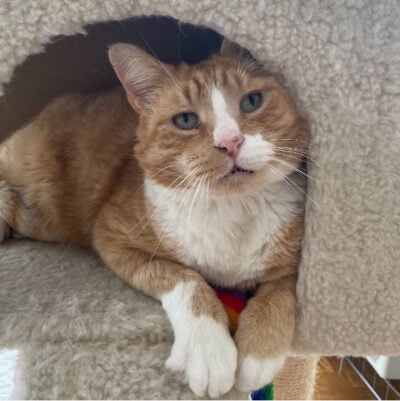 Four-year-old Sammi was dumped by his family and lived for six months in an unheated horse barn, where he was fed daily by the families of the horses. Since being with us, it’s clear that he was once an inside kitty. However, Sammi HATES being picked up. For some reason it’s very traumatic for him, making it a challenge to get him into a carrier. He’ll do best with an experienced cat owner. Other than that, he’s a quiet, gentle, healthy, big mush. I will find him a great new family. He is very easy to love.
Four-year-old Sammi was dumped by his family and lived for six months in an unheated horse barn, where he was fed daily by the families of the horses. Since being with us, it’s clear that he was once an inside kitty. However, Sammi HATES being picked up. For some reason it’s very traumatic for him, making it a challenge to get him into a carrier. He’ll do best with an experienced cat owner. Other than that, he’s a quiet, gentle, healthy, big mush. I will find him a great new family. He is very easy to love.
And speaking of easy to love, I’ll close this blog with a Valentine’s Day message for Howard and blind, beautiful Bella, the two beings who have the deepest part of my heart.
Happy Valentine’s Day to everyone,
xo
Beth
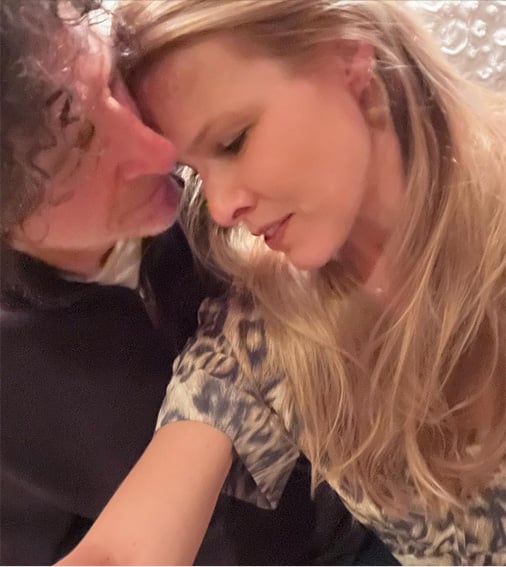
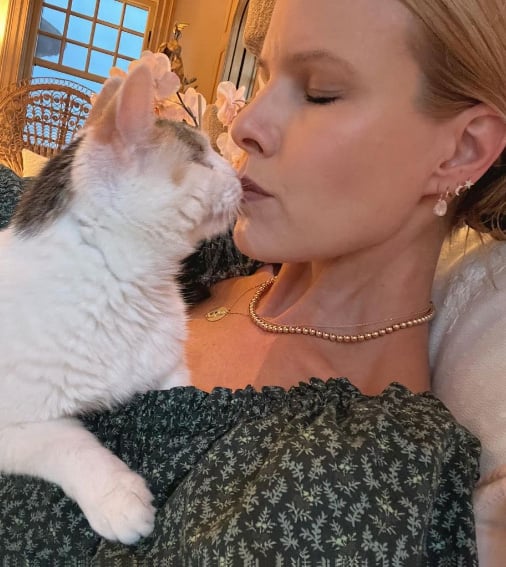
P.S. I just have to tell you about my special-needs foster kitten, Shrimpy, who has megaesophagus, a congenital condition that doesn’t allow 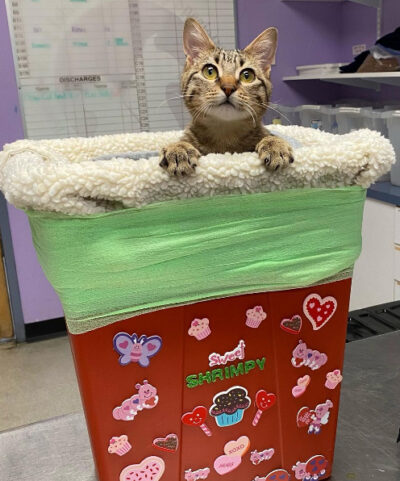 him to swallow normally due to an enlarged esophagus. He must eat his meals sitting upright in his special bucket chair. He’s used to it and loves it. The only challenge is keeping him away from other pets’ dishes, so he might be best as a single pet. In the meantime, his condition seems to be improving, though he’ll still need bucket feedings for the next six months until recheck. And after that, we hope no buckets at all! He’s a special kitty who needs a special family to love him.
him to swallow normally due to an enlarged esophagus. He must eat his meals sitting upright in his special bucket chair. He’s used to it and loves it. The only challenge is keeping him away from other pets’ dishes, so he might be best as a single pet. In the meantime, his condition seems to be improving, though he’ll still need bucket feedings for the next six months until recheck. And after that, we hope no buckets at all! He’s a special kitty who needs a special family to love him.


